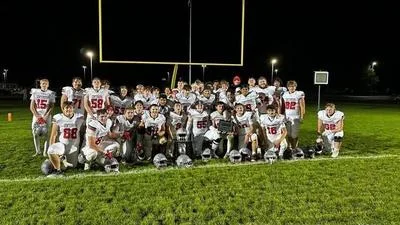Let’s talk moving in fences.
With the 2023 Major League Baseball season a month away, teams are looking to get an edge. For the Detroit Tigers, that included moving in the centerfield fence and lowering fence height. Comerica Park had the deepest center field in MLB at 422 feet, despite a posted distance of 420 feet. The new distance will be 412, and the outfield wall will be lowered from 13 feet at its highest in right-center field to seven feet across the entire span of the wall.
Hitters have complained about the dimensions for years, most notably Nick Castellanos in 2019, who said, “The park is a joke.” Scott Harris, Detroit Tigers president of baseball operations, said, “The changes will reward hitters who can hit to the deepest part of the park, while maintaining the high number of doubles and triples. The lowered height will also allow defenders the chance to rob home runs.” Harris added that the players “will start to feel better about themselves.”
While hitters might feel better about themselves for those 10 fewer feet and shorter fences, you can bet that pitchers will feel lesser about themselves for giving up cheaper homeruns, and I hope someone keeps track of the homers the Tigers gain vs. the ones they give up under the new configuration, and does a quantitative analysis of production and salary increases based on increased slugging numbers. Maybe the Tigers will save salary on higher ERAs for pitchers.
Now let’s get into it. Is 422 feet too much for these big, strong, chiseled, ripped athletes, who scientifically sculpt their launch angles? That’s only 140.7 yards, a mere chip to the green of a par 3. Baseball greats never complained about big parks. They thrived in them. Let’s talk Willie, Mickey and The Babe.
According to Society for American Baseball Research analyst Bill Jenkins, who specializes in sabermetrics, in 1921 Babe Ruth hit 59 homers with a “dead’ ball, while playing half his games in the old Polo Grounds, which measured 483 feet to dead center and 500 feet to power alleys. Under today’s rules and dimensions, according to Jenkins, Ruth would have hit 104 homers. Beginning in 1923, Ruth played half his games at original Yankee Stadium – 487 to dead center and 429 to deep right. Babe rarely pulled down the line at the 280-294-foot right field foul pole. Sabermetrics analysis estimates that old Yankee Stadium dimensions vs. neutral ballparks cost Ruth between 15 and 20 homeruns a year between 1921 and 1934 and about 250 homeruns over the course of his career.
Joe DiMaggio, a righty who had a 490-foot left field power alley, is estimated to have lost 77 homers playing in the Bronx.
Let’s talk Mickey. Mantle was a switch-hitter who was a power alley hitter. Like Ruth, Mantle hit to the deepest parts of the park. The power alley in left went from 457 feet to 490 when he played. Straight-away center was 461 and deep right was 407 for the Mick, with 10- to 20-foot-high fences – 22.5 feet high in dead center. Like Ruth, Mantle seldom took advantage of the short-porch dimensions at the left field and right field foul poles. Sabermetrics estimates that Mantle lost between 15-20 homers a year to Yankee Stadium dimensions vs. neutral parks over the first 16 years of his career and maybe 10 or 15 more his last two years, for a career-lost estimated total of as many as 300 … yes 300 lost homeruns to neutral parks of the time … more in today’s shorter dimension parks.
Is 422 feet too far to dead center? On Aug. 12, 1964, Mantle faced Chicago’s Ray Herbert and Mick blasted one over the 22.5-foot fence in dead center at old Yankee Stadium, just to the right of the 461-foot sign. The ball landed 15 rows back, and at 2.6 feet per row (and chair), the ball landed 500 feet from home plate. Mantle tossed his bat and shook his head after he hit it. “I thought it was going to be caught,” he said. After all, he had already lost more than 100 homers to dead center’s dimensions by that time.
How many homers did Willie Mays lose to the Polo Grounds from 1951-1957? Well, he hit only 97 homeruns at home in seven years, and some estimates have him losing 50 homeruns or more vs. neutral ballparks. For Mays, center was posted at 483, and estimated at as much as 500 feet, with 455 to deep right and 449 to deep left.
Want more modern? If he had hit in old-dimension ballparks, Barry Bonds is estimated to have hit 22 fewer homers in his 73-homer 2001 campaign.
Now, just because a ballpark kept a hammered ball in the field of play doesn’t mean that the player would hit those same shots as homers in a different park. That is a problem with taking analytics at face value. A smaller park also means that perhaps the player would have been pitched to differently, and by different pitchers in the same situations. Pitchers often pitch to a batter one way in a big park and another way in a smaller park. So if Babe, Mick or Willie played at Fenway or Wrigley or Baker Bowl or the Polo Grounds or tiny Ebbets Field, it doesn’t mean they would have hit more … or fewer. Some players have “warning track” power no matter where they hit.
Getting down to it … today’s ballplayers are bigger, stronger and more athletically trained and scientifically fine-tuned than ever before, hitting a livelier ball than the old guys hit. If you want to feel better about yourself, hit one 423 feet.
What do you think? Smaller hitter-friendly parks or just play ball? Let me know at mike.blake@mountvernonnews.com.







